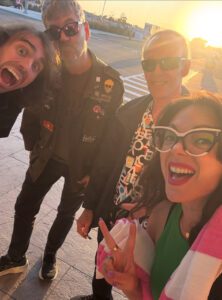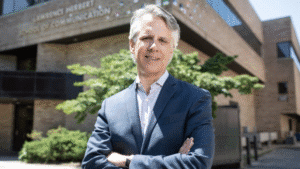By Urvi Gandhi
Over the long Labor Day weekend, the Shinnecock Indian Nation in Southampton echoed with the beats of drums, traditional Native American music and the footsteps of hundreds of dancers who had gathered to celebrate the 76th annual Shinnecock Powwow.
The assembly, which celebrates a tribe’s heritage, community and culture, was open to the public for the first time since the outbreak of the coronavirus pandemic, during which it was held privately. Thousands from New York and beyond gathered for this year’s event, which featured a variety of performances and ceremonies. Vendors selling food, clothing and jewelry catered to the crowd, which ranged from 7,000 to 15,000 people on the most popular day. The event took place from Sept. 2 to 5.


“I’ve always gone to [the powwow]. During Covid, I just watched it online, so now that I’m back, it feels like a reunion,” said Gogigksoquili Dimalanta, who grew up in the Shinnecock Nation.
“It’s very spiritually uplifting, and when things in the world become strenuous and make you off center, it’s always good to be able to go to a powwow to bring you back to who you are,” said Charlie Smith, the Sachem of the Shinneock Nation.
Smith sits on the Council of Trustees and serves as a spiritual adviser to the nation in his role as sachem, the elected representative of a tribe or group of tribes. “A powwow is about the dancers. It’s about the singers that are there. It’s about us coming together, it’s about that drum,” he said.
The powwow circuit, which begins in April and ends in September, is visited by thousands of Indigenous families, dancers and singers from across North America and the Pacific Islands who spend their summers visiting and competing at powwows. The Shinnecock Powwow is one of the biggest and concluding events.


The event hosted a diverse array of Native American and Indigenous people from all over the Americas.
“I come here to show people that two spirit and trans people are an important part of the circle. Trans people have been here since contact, and it’s important that people remember that we’re here because colonization and Christianity took a lot of that away from us,” said River Webb, a Native transgender dancer who tours the powwow circuit every year.
“It’s a huge source of income for many Native people,” said Kevin Watson, an elder of the St. David’s Island Indian Nation of Bermuda. “We also come here to dance — for our ancestors, for our families, for our history.”
One of the event highlights was the Grand Entry Ceremony, which was led by tribal leaders and elders and featured all the dancers in the powwow, including those as young as 5 years old. The ceremony concluded with all the dancers on the stage, which is known as the “drum.” The ceremony was accompanied by the voices and drums of the Youngblood Singers, a Shinnecock drum group.
Drums occupy a sacred space in Shinnecock and Native culture. According to Smith, they are prepared in traditional methods to maintain their spiritual and cultural significance.
“The drum is known as the heartbeat of our nation. It holds the spirit of the people that have passed on,” Smith said.

Preparations for the powwow started almost a year ago and brought together nearly 100 vendors and 40,000 people over the four days. Vendors sold items from traditional frybread and seafood to regalia and jewelry as Native performers from across the continent competed on stage.

Susan Soto, a Desert Storm veteran, organized entertainment for the powwow, including performances by R&B singer Gianni Willis, fashion designer Kayla Lookinghorse, and rapper King Charles FNYK, all Shinnecock Nation residents.

“This year, we wanted to showcase our tribal members, young tribal members,” Soto said.
The event also featured speeches on and prayers for Indigenous causes and issues, such as the disproportionate rates of violence against Indigenous women across the Americas and the forcible historical separation of Indigenous children from their families.
The Shinnecock Nation has hosted powwows since 1946 and is already starting preparations for its 77th annual powwow next year.











